- Juliana Gragnani
- BBC News Brazil
For editorial reasons and due to the sensitivity of the image, the BBC does not show the photograph of the man who jumps into the void.
Death or death. On the morning of September 11, 2001, dozens of people were confronted with this false alternative. With fire and smoke inside the buildings of the World Trade Center in New York, the victims on the upper floors began to jump, losing their lives when falling from up to 417 meters.
The scene of people jumping from buildings attacked by two planes is one of the darkest and most sensitive aspects of the tragedy, which will be 20 years old this Saturday.
The image of one of these people, a man falling almost plummeting, face down and his body parallel to the lines of the Twin Towers, became iconic.
The day after the tragedy, several newspapers published the photo taken by Richard Drew, Associated Press photographer. Years have passed and the image is too painful for many to contemplate. Others saw in her the terrible aesthetics of that leap to death.
This is the story of the iconic photo of “The Falling Man” (“The Man Who Falls”).

“It was just any day in New York,” begins Richard Drew, now 74.
A photographer since the age of 19, the experienced Drew, then 54, had just covered the US Open tennis tournament in Queens, New York. That Tuesday, September 11, would cover New York Fashion Week, more specifically, the first maternity show with real pregnant models. Drew watched the parade in Bryant Park, right in the middle of Manhattan, with a cameraman from CNN.
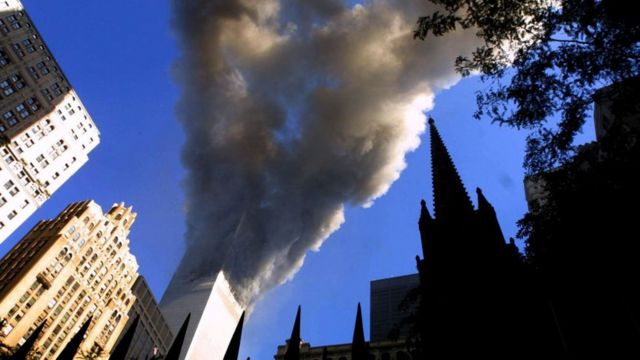
As they spoke, the CNN cameraman said: “There was an explosion at the World Trade Center. A plane crashed into the World Trade Center ”.
Instantly Drew’s cell phone rang. It was his editor, who ordered him to rush to the scene. Drew grabbed his camera and ran to Times Square. From there, he took the subway to the Twin Towers.
When he came out of the stairs of the subway, saw an unforgettable image: the two burning towers. He began photographing people shocked by the chaos that surrounded them, the FBI already on the streets isolating the area.
“Then I realized that the smoke was blowing from west to east and turned around to avoid it. I stayed next to the ambulances, between a lifeguard and a policeman, ”he tells BBC Brazil.

The lifeguard was the first to notice. Pointing up, he yelled, “Oh my God, people are jumping off the building!” Recalls Drew.
The photographer pointed his camera. “I took as many photos as I could of people falling out of the building,” he says.
“I don’t know if they jumped by choice or if they were forced to jump through fire or smoke. I don’t know why they did what they did. I only know that I had to record it ”, he says.
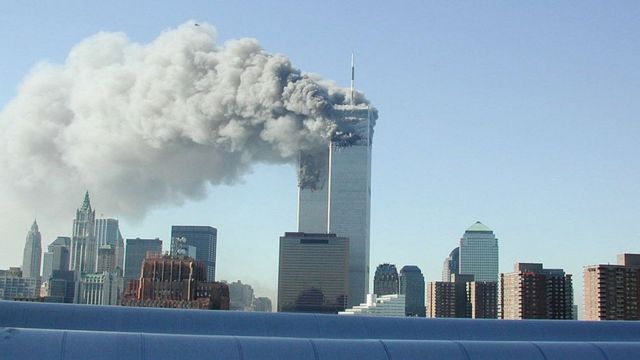
The New York City Coroner’s Service later stated that people who jumped from buildings could not be called “suicidal.” because they were expelled from the building by smoke, fire or explosions.
The cause of death of all those who lost their lives in the fall of the Twin Towers, attacked that day by al Qaeda, was listed as “murder” on death certificates.
In a 2002 report, the daily USA Today he estimated through photos, videos and interviews that 200 people died this way in the 9/11 tragedy. From the photos, The New York Times he estimated that there were 50 people.
According to survivors’ accounts, the fact that people jumped from the building next door may have saved the lives of hundreds of people who, upon seeing them, rushed to evacuate their workplace.
“I was not cold”
While photographing, Drew experienced something sinister: he heard the noise of bodies hitting the ground. “Some say I was cold. It’s not that. I am a trained journalist. You immerse yourself in the moment and just photograph what’s happening, on autopilot, ”he says.
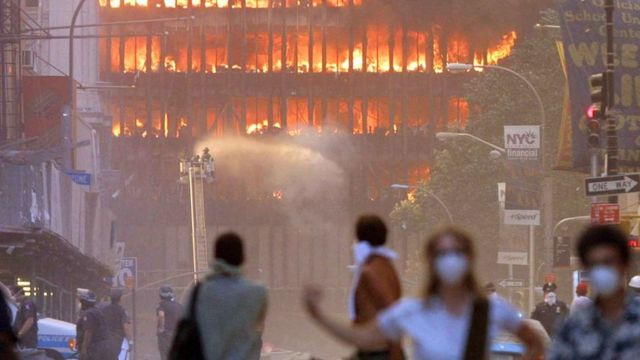
“When someone started to fall, I would point my scope. Since I was working with a digital camera, when I kept my finger on the camera button, I would take multiple pictures. And that’s how he followed the people who were falling out of the building. ” At 9:41 a.m., he forever recorded the last moments of the “falling man.”
When Drew returned to the newsroom and went to review his photos, he knew instantly that this was the strongest of all. “I was upright, head down, between the two towers. There was a symmetry there. But it was only like this for a moment. If it had been another moment, I would have come out in a different position ”, he says.
“Silent” photo
“A lot of people don’t like to see this photo. I think people identify with her and are afraid of having to face the same decision as that man one day, ”says Drew.
For him, the image is representative of what happened that day: “It is one of the few that shows someone dying in the most serious attack we have suffered in the United States,” he says. Despite being a photo about death, Drew acknowledges, it is a “silent” photo. “It is not like other violent photos of deaths that occur in wars.”
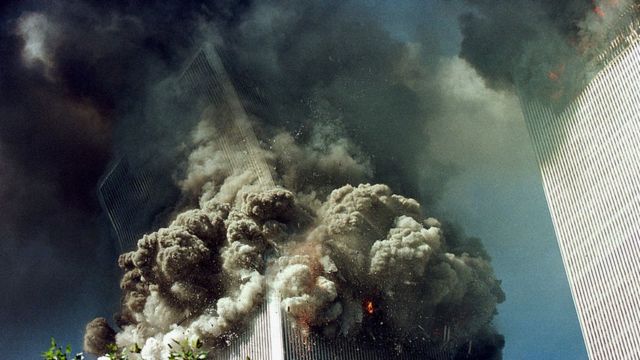
That night, Drew returned home with a colleague. They sat and talked about everything except what they had seen that day. His wife, Drew says, woke up at dawn wanting to vacuum the entire house. “Post-traumatic stress comes later,” he acknowledges. “Talking about what happened helps. That was a moment in my history, just as it was a moment in history ”.
Another moment in history and its history: when he was 21 years old and living in Los Angeles, in 1968, Drew was one of the four photographers present in another historical moment: the death of the senator Bobby Kennedy, brother of former President John F. Kennedy.
“I was on stage behind him to photograph him when he was speaking. I got thirsty and went to get water, ”says Drew. “He came out and I followed him. When they attacked him, I climbed onto a table next to him and photographed him on the ground. “
“I was just doing my job, just like I was just doing my job years later, on September 11,” he says.
Who was the falling man?
Drew says he has reflected on who the man he recorded jumping from one of the Twin Towers was, but never in a “very deep” way.
“He was one of the almost 3,000 people who died that day. I do not know his name, nor the decision he had to make. I know he jumped off a building and I was there to capture that moment, ”he says.
But the mystery surrounding her identity has worried others.
One of them, the American journalist Tom Junod. Two years after September 11, Junod wrote a cover story for “Esquire” magazine in which coinedoh name from “The falling man” for the protagonist of the photo and triedoh to identifyit.
Junod came up with two names. One, Norberto Hernández, chef at Windows on the World restaurant, which was located on the 106th floor of the North Tower. But Hernández’s family said it couldn’t be him because of the clothes he was wearing.
The second man was Jonathan Briley, a 43-year-old sound engineer who also worked at the restaurant. Briley’s brothers said they thought it could be the one in the photo because of the man’s clothing and body.
It may be him, but there is no way to be sure.
In 2006, American director Henry Singer made a documentary based on Junod’s reports and using other images captured that day.
Plane in Kabul
The choice between death and death also appears to have been what happened three weeks ago in Afghanistan, when, desperate to leave the country, men hung themselves from the fuselage of a US plane.
The two images are like two terrible endings to this story that came together 20 years later.
Almost a month after the attacks on the Twin Towers, the then president of the United States, George W. Bush, announced the war against Afghanistan. The United States would remove the Taliban, who were harboring al Qaeda, the perpetrators of the attacks, from power in the territory they controlled.
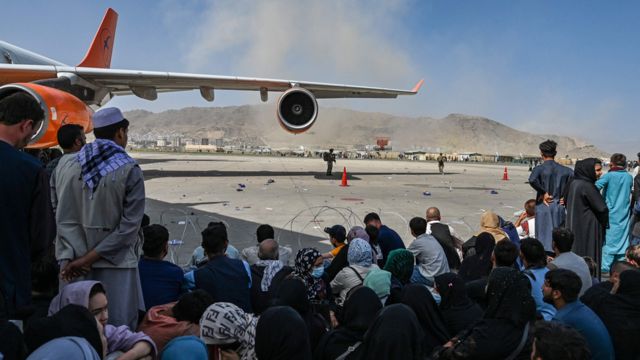
After 20 years, when President Joe Biden led the United States to end the war by withdrawing American troops from Afghanistan, the Taliban returned to power.
It was the desperation of staying in a country once again controlled by the Taliban that made Afghans cling to the wings and fuselage of a plane.
The plane takes off and bodies plummet into nothingness, just as they did on September 11. A young 19-year-old soccer player, Zaki Anwari, died trying to escape in this way.
The Falling Man photographer declined to comment on Afghanistan or current politics. Today, Drew photographs the excitement of the “brokers” of the New York Stock Exchange, right next to where the Twin Towers once stood and where there is now a memorial to the victims of September 11.
eltiempolatino.com